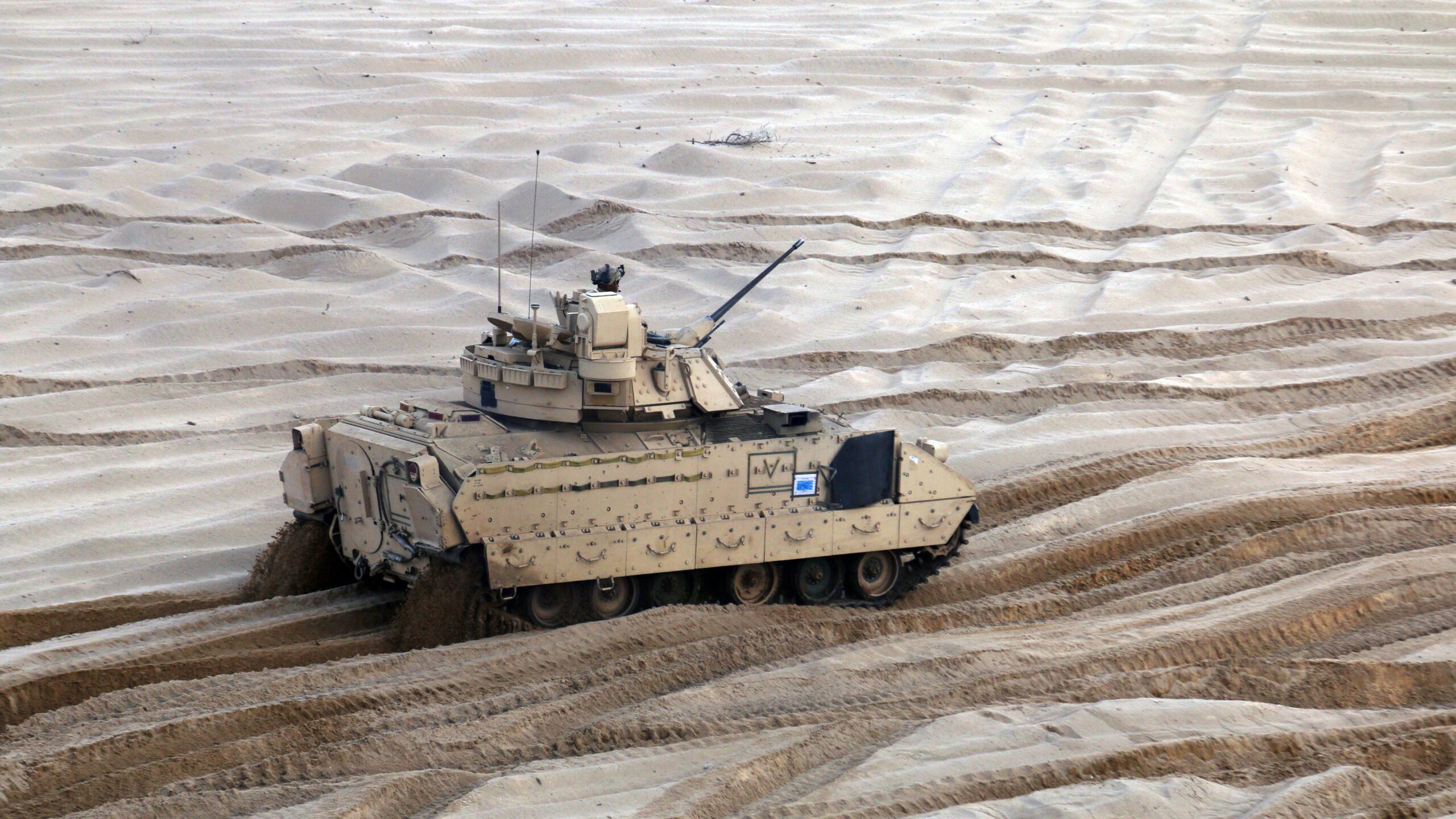
An M2A3 Bradley Fighting Vehicle from 5th Squadron, 4th Cavalry Regiment, 2nd Armored Brigade Combat Team, 1st Infantry Division, moves into position to conduct a firing systems check at the Presidenski Range, Trzebian, Poland. (U.S. Army photo by Staff Sgt. Wallace Bonner)
GVSETS 2023 — The US Army plans to increase the involvement of warfighters in the current and next phases of the XM30 Mechanized Infantry Combat Vehicle program, in order to ensure the next-gen vehicle is meeting real-world, operational needs, a top officer said Wednesday, .
The feedback collected in soldier touchpoint events will lead the future steps of the platform development and support the branch in progressing with effort, Brig. Gen. Geoffrey Norman, director of the Next Generation Combat Vehicle, Cross-Functional Teams, told the 15th Annual Ground Vehicle Systems Engineering & Technology Symposium, in Novi, Mich,
“I think that [soldier’s feedback] is going to be absolutely essential and will give Congress and the taxpayers more confidence that what we are developing to deliver the warfighters is what they actually need,” said Norman. He added that the service is working to ensure that the “first and subsequent XM30 vehicles are based on feedback from warfighters, soldiers, and leaders who are going to use these capabilities in the field.”
Previously known as the Optionally Manned Fighting Vehicle, the Army rechristened the program as the XM30 earlier this year. In June, the US Army awarded two firm-fixed-price contracts worth nearly $1.6 billion to General Dynamics Land Systems (GDLS) and American Rheinmetall Vehicles, to move forward with the detailed design phase. The agreements will cover activities and tests to mature the platform designs and the delivery of up to 11 prototype vehicles, two ballistic hulls and turrets, armor coupons and digital engineering data.
According to the Army, the XM30 will feature cyber security capabilities, safe autonomy and advanced threat protection in order to provide lethality, survivability, and upgradability. Its modular open system architecture will allow for adding new, developing technology over its lifecycle.
Maj. Gen. Glenn Dean, Program Executive Officer Ground Combat Systems (PEO GCS) told the audience here that the goal is to enable “persistence” improvements of the platform.
“The modular systems architecture and engineering approach that we are applying allows us to plan at a macro level for modernization across the lifecycle of the system, not knowing what capabilities we all need for the future,” he said.
The Army has requested in its fiscal 2024 budget proposal nearly $1 billion in R&D for the maturation of detailed design and prototyping phases over the next fiscal year. The service will downselect one provider by the end of FY27, with the first unit equipped in FY29.
The XM30 is intended to replace the Bradley Fighting Vehicle, which entered service in the 1980s. Although it has been updated over the years to transport infantry on the battlefield and provide support to dismounted troops, the Bradley has reached its technological limits according to the branch.
However, retiring the Bradley has been a problem for the Army as several unsuccessful attempts to replace the platform have been conducted over the last 20 years. The Future Combat Systems program was its first try. Launched in 2003, it was cancelled in 2009. In the same year, the service started the Ground Combat Vehicle effort, which was then terminated in 2014.
In 2018, the Army unveiled the Optionally Manned Fighting Vehicle initiative and intended to select two bid samples and written proposals in 2020. However, only a single industry participant, GDLS, applied for the program.
The branch then decided to revisit the acquisition process in January 2020 and released a new OMFV plan three weeks later, with the final RFP being published in December 2020.






















